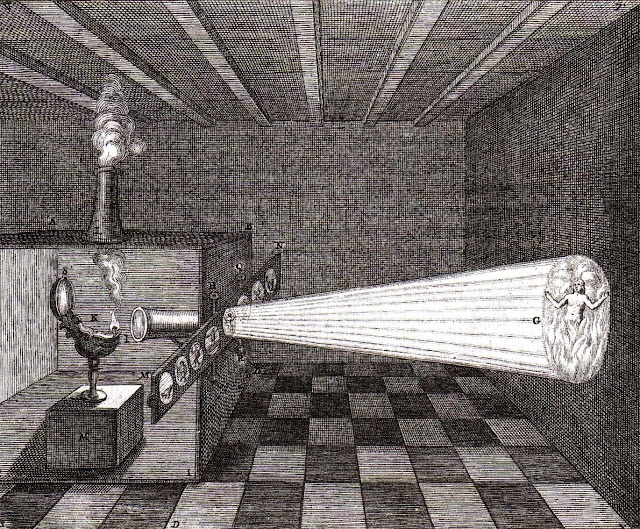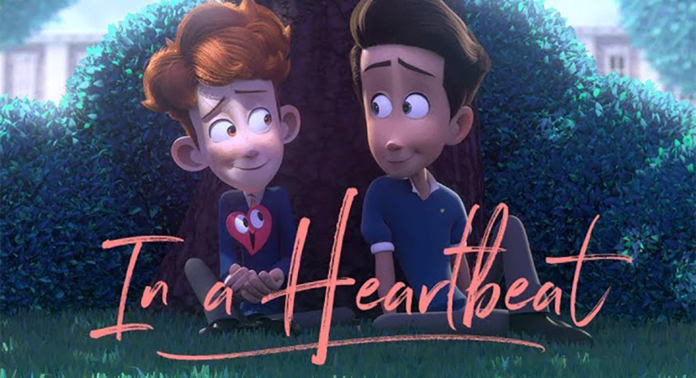¿Qué es en el fondo actuar, sino mentir? ¿Y qué es actuar bien, sino mentir convenciendo?
Music
viernes, 1 de septiembre de 2017
Introducción
 |
| Cámara de los hermanos Lumière. |
La historia del cine como espectáculo comenzó en París, Francia, el 28 de Diciembre de 1895. Desde entonces ha experimentado una serie de cambios en varios sentidos. Por un lado, la tecnología del cinematógrafo ha evolucionado mucho, desde el primitivo cine mudo de los hermanos Lumière hasta el cine digital del siglo XXI. Por otro lado, ha evolucionado el lenguaje cinematográfico, incluidas las convenciones del género, y han surgido así distintos géneros cinematográficos. En tercer lugar, ha evolucionado con la sociedad, con lo que se desarrollaron distintos movimientos cinematográficos.
Introduction
The history of cinema as a show began in Paris, France, on December 28, 1895. Since then it has undergone a series of changes in several senses. On the one hand, the technology of the cinematograph has evolved a lot, from the primitive silent cinema of the Lumière brothers to the digital cinema of the XXI century. On the other hand, the cinematographic language has evolved, including the conventions of the genre, and have thus arisen different cinematographic genres. Thirdly, it has evolved with society, with which different film movements were developed.
EL
PRECINE
El
ser humano siempre se ha preocupado por captar y representar el movimiento. Los
bisontes con seis patas que los prehistóricos pintaban en las cavernas
demuestran este hecho. Durante siglos, diversas civilizaciones o personas han
buscado procedimientos para reproducir la realidad. Es el caso de las
representaciones con sombras, los primeros espectáculos en público con
proyección de imágenes animadas.
Utilizada
ya
en el siglo XVI, la "cambra
obscura" permitía la proyección de imágenes
externas dentro de una cámara oscura. Ésta
fue la precursora
de la fotografía.

THE PRECINE
The human being has always been concerned with capturing and representing movement. The bison with six legs that the prehistoric painted in the caves demonstrate this fact. For centuries, various civilizations or people have sought procedures to reproduce reality. This is the case of shadow representations, the first public shows with projection of animated images.
Used already in the sixteenth century, the "dark cambra" allowed the projection of external images inside a dark camera. This was the precursor of photography.
LA
época muda
El
cine
nació oficialmente el 28 de diciembre de 1895. Aquel día, los hermanos Lumière
mostraron, en sesión pública, sus films a los espectadores del Salon
Indien
de París. En uno de sus primeros films, "La
llegada de un tren a la estación de Ciotat", el
efecto de una locomotora que parecía salir de la pantalla fue enorme. El
aparato con el cual lo consiguieron se
denominó Cinematógrafo.
Las películas que siempre se veían eran hechas sobre momentos cotidianos, sobre la vida laboral o familiar. Y fue la magia y la imaginación de otro hombre, Georges Méliès, que salvó el cine de acabar como un invento más entre tantos de aquella época.
Las películas que siempre se veían eran hechas sobre momentos cotidianos, sobre la vida laboral o familiar. Y fue la magia y la imaginación de otro hombre, Georges Méliès, que salvó el cine de acabar como un invento más entre tantos de aquella época.

THE TIME MOVES
The cinema was officially born on December 28, 1895. On that day, the Lumière brothers showed their films to the audience at the Indien Salon in Paris. In one of his first films, "The Arrival of a Train to the Station of Ciotat", the effect of a locomotive that appeared to leave the screen was enormous. The apparatus with which they obtained it was denominated Cinematograph.
The films that were always seen were made about everyday moments, about work or family life. And it was the magic and imagination of another man, Georges Méliès, who saved the cinema from ending as an invention among so many of those days.
LA
época SONORA
 El
6 de octubre de 1927 sucede un hecho revolucionario para la historia del cine:
¡comenzaba a hablar!. "El
cantor de jazz", de Alan Crosland,
dejaba escuchar al actor Al Jolson
cantando.
El
6 de octubre de 1927 sucede un hecho revolucionario para la historia del cine:
¡comenzaba a hablar!. "El
cantor de jazz", de Alan Crosland,
dejaba escuchar al actor Al Jolson
cantando.
Se iniciaba una nueva era para la industria del cine. También para los actores: muchos de ellos desaparecieron como tales al conocer el público su verdadera voz, desagradable o ridícula, que no correspondía a la apariencia física. Y por supuesto, desaparecerían con ellos los intertítulos.
 El
6 de octubre de 1927 sucede un hecho revolucionario para la historia del cine:
¡comenzaba a hablar!. "El
cantor de jazz", de Alan Crosland,
dejaba escuchar al actor Al Jolson
cantando.
El
6 de octubre de 1927 sucede un hecho revolucionario para la historia del cine:
¡comenzaba a hablar!. "El
cantor de jazz", de Alan Crosland,
dejaba escuchar al actor Al Jolson
cantando.Se iniciaba una nueva era para la industria del cine. También para los actores: muchos de ellos desaparecieron como tales al conocer el público su verdadera voz, desagradable o ridícula, que no correspondía a la apariencia física. Y por supuesto, desaparecerían con ellos los intertítulos.
THE SEASON
On October 6, 1927, a revolutionary event occurred for the history of cinema: it was beginning to speak! "The jazz singer" by Alan Crosland, let the actor Al Jolson sing.
A new era was beginning for the film industry. Also for the actors: many of them disappeared as such when the public knew its true voice, unpleasant or ridiculous, that did not correspond to the physical appearance. And of course, the intertitles would disappear with them.
LA
POSTGUERRA

Al
terminar la guerra, en una Italia destrozada, aparece el llamado cine
"neorrealista", un cine testimonial sobre la realidad del momento,
hecho con pocos medios materiales pero con mucha humanidad, preocupado por los
problemas del individuo de la calle.

THE POSTGUERRA
At the end of the war, in a shattered Italy, there is the so-called "neo-realist" cinema, a testimonial cinema about the reality of the moment, done with few material means but with a lot of humanity, concerned about the problems of the individual on the street.
LAS
ÚLTIMAS DÉCADAS

A
finales de los años 70, y después de unos años de cine espectacular basado en
el catastrofismo -quizás como reflejo del retorno del peligro atómico-, se
impone la recuperación de la superproducción desde
el punto
de vista de la calidad y de la rentabilidad.

THE LAST DECADES
In the late 1970s, and after a few years of spectacular cinema based on catastrophism - perhaps as a reflection of the return of atomic danger - the recovery of overproduction from the point of view of quality and profitability is imposed.
THE CINEMATOGRAPHIC GENRES
The cinematographic genre is the general theme of a film that serves for its classification. Thus, at present, we find that the main genres are:Drama. Films that focus on the development of a conflict between the protagonists or their protagonist with the environment or with themselves.

Action. Films whose argument implies a moral interaction between "good" and "evil" brought to an end by violence or physical force.
Adventure. Those that contain situations of danger or risk.
Terror. Made with the intention of provoking tension, fear and / or startling in the audience.
Mystery movies. They present the progression from the unknown to the known by the discovery of a series of enigmas.

Romantic films. They emphasize the loving and romantic elements.
Suspense. They are performed in order to provoke tension in the viewer. The term thriller is also often used to designate movies of this type, although there are subtle differences.

Western. It focuses on the walks along the western plains to transport the viewer and the character to the wild and hot past in the late 60's.
Pornographic. This type of gender is totally of physical and erotic essence since the intimate experiences between the couples are represented.
Warlike. It serves or performs to reflect a clear vision about certain universal conflicts or simply to make historical references, historical facts or events important to the whole world.
Animation. This genre is responsible for creating images or dolls that will be the protagonists; this type of genre is basically for the children's audience as they develop stories based on animated characters, cheerful, fun and full of feelings and imagination.

Musical. Sound is involved as a way to give the protagonist an artistic and danceable development within the development of the film, that is, to include an innovative and revitalizing movement as another way to shape a new expression.
LOS
GÉNEROS Cinematográficos

El
género cinematográfico es el tema general de una película que sirve para su
clasificación. De este modo, en la actualidad, encontramos que los principales
géneros son:
vDrama.
Películas que se centran en el desarrollo de un conflicto entre los
protagonistas o su protagonista con el entorno o consigo mismo.
v Comedia.
Películas realizadas con la intención de provocar humor, entretenimiento y/o
risa en el espectador.
v Negro.
Presentan a sus personajes principales con un estilo nihilista o
existencialista.
v Acción.
Películas cuyo argumento implica una interacción moral entre el «bien» y el
«mal» llevada a su fin por la violencia o fuerza física.
v Aventura.
Aquellas que contienen situaciones de peligro o de riesgo.
v Terror.
Realizadas con la intención de provocar tensión, miedo y/o sobresalto en la
audiencia.
v Cine
de misterio. Presentan la progresión de lo desconocido a lo conocido por el
descubrimiento de una serie de enigmas.
v Cine
romántico. Hacen hincapié en los elementos amorosos y románticos.
v Suspense. Son realizadas con el
fin de provocar tensión en el espectador. También suele utilizarse el término
thriller para designar películas de este tipo, aunque hay sutiles diferencias.
v Fantasía.
Contienen hechos, mundos, criaturas o cosas irreales y fantasiosas.
v Western.
Se
enfoca en los paseos por las llanuras del oeste para así transportar el
espectador y al personaje al pasado salvaje y caluroso en la época de finales
de los 60's.
vPornográfico. Este tipo
de género es totalmente de esencia física
y erótica ya que se representan las vivencias íntimas entre las parejas.
v
Bélico.
Sirve o
se desempeña para reflejar una visión clara acerca de ciertos conflictos
universales o simplemente para hacer referencias históricas, de hechos o
acontecimientos históricos importantes para el mundo entero.
v Animación.
Este
género se encarga de crear imágenes o muñecos que serán los protagonistas; este
tipo de género es básicamente para el público infantil ya que se desarrollan
historias en base a personajes animados, alegres, divertidos y llenos de
sentimientos e imaginación.
v Musical. Se
involucra el sonido como forma de darle al protagonista un desenvolvimiento
artístico y bailable dentro del desarrollo de la película,
es
decir,
incluirle
un movimiento innovador y revitalizador como otra manera de darle forma a una
nueva expresión.

LAS
PELÍCULAS MÁS IMPORTANTES
Las
tres películas consideradas las más significativas por su aporte al lenguaje
cinematográfico son; La quimera de oro y
El acorazado Potemkin
del año 1925, y Ciudadano
Kane
de
1941.
THE MOST IMPORTANT MOVIES
The three films considered the most significant for their contribution to the cinematographic language are; The gold chimera and The Battleship Potemkin of the year 1925, and Citizen Kane of 1941.
The three films considered the most significant for their contribution to the cinematographic language are; The gold chimera and The Battleship Potemkin of the year 1925, and Citizen Kane of 1941.
 THE GOLDEN CHIMERA
THE GOLDEN CHIMERA
Being its original name The Gold Rush,it's an American movie
directed by Charles Chaplin and released
the 26 of June of 1925. This same one was
revived in 1942 with a new
musical accompaniment and narration
in off Chaplin's own.
LA QUIMERA DE ORO
Siendo su nombre original The
Gold Rush,
es una
película de cine estadounidense
dirigida por
Charles Chaplin
y estrenada
el 26 de
junio
de 1925. Ésta misma fue
reestrenada en
1942 con un
nuevo
acompañamiento musical
y narración
en off
del propio Chaplin.
EL ACORAZADO POTEMKIN
Potyomkin (en ruso), es una película muda
dirigida por el cineasta ruso Sergéi
Eisenstein.
Esta obra se realizó para elevar el espíritu
de la rebelión social creada en 1917
por la revolución bolchevique.
THE ACORNATED POTEMKIN
Whose original name is Bronenósets
Potyomkin (in Russian), is a silent film
directed by the Russian filmmaker Sergéi
Eisenstein.
This work was done to raise the spirit
of the social rebellion created in 1917
by the Bolshevik revolution.
CIUDADANO KANE
Kane, es una película dirigida, escrita,
producida y protagonizada por el
estadounidense Orson Welles. La película
ganó un Oscar al mejor guión original y
estuvo entre las candidatas en otras
ocho categorías.
Kane, is a directed, written,
produced and starring
American Orson Welles. The movie
won an Oscar for the best original screenplay and
was among the candidates in other
eight categories.
CITIZEN KANE
Originally called CitizenKane, is a directed, written,
produced and starring
American Orson Welles. The movie
won an Oscar for the best original screenplay and
was among the candidates in other
eight categories.
CONCLUSIÓN

CONCLUSION
Cinema was developed from the scientific point of view before its artistic or commercial possibilities were known and explored. One of the first scientific advances that led directly to the development of cinema was the observations of Peter Mark Roget, secretary of the Royal Society of London, who in 1824 published an important scientific work entitled Persistence of vision in what affects objects in motion, in which it established that the human eye retains images for a fraction of a second after the subject stops having them in front of them. This discovery prompted several scientists to investigate to demonstrate the principle.
El cine se desarrolló desde el punto de vista científico antes de que sus posibilidades artísticas o comerciales fueran conocidas y exploradas. Uno de los primeros avances científicos que llevó directamente al desarrollo del cine fueron las observaciones de Peter Mark Roget, secretario de la Real Sociedad de Londres, que en 1824 publicó un importante trabajo científico con el título de Persistencia de la visión en lo que afecta a los objetos en movimiento, en el que establecía que el ojo humano retiene las imágenes durante una fracción de segundo después de que el sujeto deja de tenerlas delante. Este descubrimiento estimuló a varios científicos a investigar para demostrar el principio.

CONCLUSION
Cinema was developed from the scientific point of view before its artistic or commercial possibilities were known and explored. One of the first scientific advances that led directly to the development of cinema was the observations of Peter Mark Roget, secretary of the Royal Society of London, who in 1824 published an important scientific work entitled Persistence of vision in what affects objects in motion, in which it established that the human eye retains images for a fraction of a second after the subject stops having them in front of them. This discovery prompted several scientists to investigate to demonstrate the principle.
Suscribirse a:
Entradas (Atom)









